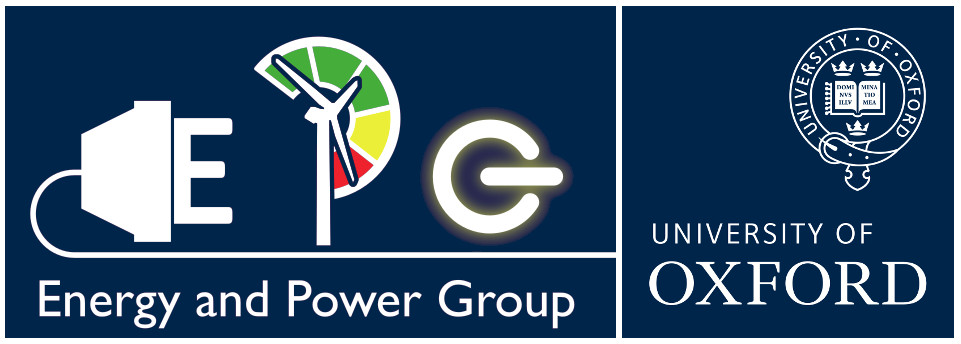Citizen Science
Citizen Science for Energy Access
Bringing “Power to the People” by engaging thousands of citizen scientists in rural electrification research
By: Alycia Leonard
It’s a great time to be a citizen scientist! Despite slowdowns in many types of research, progress has been flourishing on our Power to the People citizen science project. We launched this initiative at the beginning of March to bring diverse perspectives to the problem of rural electrification and geospatial grid design. Since then, our contributors have made nearly 300,000 image classifications and identified rural homes in Sierra Leone, Kenya, and Uganda to help us better map rural areas and design community-tailored electrical grids.
Our Setup
Power to the People is hosted on the Zooniverse, an online citizen science platform created by Oxford Astrophysics. Zooniverse hosts a wide variety of projects, ranging from spotting penguins in Antarctica to documenting concentration camp victims. Our Power to the People project seeks to identify rural homes in satellite imagery of sub-Saharan Africa to improve mapping in rural areas and enable better electrical systems planning. This is part of the broader Geospatial Design of Energy Systems for Africa (GeoDESA) project in the Energy and Power Group, funded by a UKRI Citizen Science exploration grant and supported by the Satellite Applications Catapult and Earth-i.
Project Growth
Figure: Classifications since launch for Power to the People
Work on Power to the People has accelerated in recent weeks. It’s interesting to look at our growth in relation to the “strange times” we are experiencing. Participation ticks up right around the same time that many countries around the world started to go into lockdown. We are hoping this means that our community is finding a little comfort and distraction in helping out with this research.
It’s been a lot of fun to learn about our community as the data rolls in. For instance, we have identified our contributors’ favorite times to work on the project. Verdict is in: evenings are most popular, with peaks at 5:00 PM and 8:00 PM.
Figure: Heatmap of classification activity (March 2nd to May 11th, adjusting for local timezones)

Though we don’t collect location data for contributors, we can get a rough idea about our dispersion around the globe based on time zones. We have lots of contributions from UTC +1, and +2 offsets, as well as -4, -5 and -7, with smaller contributions smattered throughout the rest. Lots of international perspectives are coming in.
Perhaps the best way to learn about our community however hasn’t been their contribution patterns; it’s been what they have been telling us.
Community Engagement
One fantastic part about hosting Power to the People on the Zooniverse is getting to interact directly with our participants. The Zooniverse platform has a “Talk” feature which allows citizen scientists to contact researchers and conversely lets researchers update the community directly about the project. Talk is well used and incredibly useful. We have been seeing lots of insightful observations and questions on Power to the People.
Our citizen scientists have been showing a great deal of engagement and understanding of the project on Talk. They ask questions that cover themes like:
- How to distinguish between man-made features and vegetation
- How we process satellite data before upload and after labelling
- How the platform was designed and how this can influence classifications
- How the data we collect will be protected and used
Contributors have also highlighted various interesting features in our data. For instance, many have highlighted images of agricultural areas in Talk posts, noticing the linear patterns on the ground and evenly spaced crops. Others have pointed out homes under construction which are still lacking roofs, reservoirs, and other interesting visible features.
Figure: Agricultural images highlighted by citizen scientists through the Zooniverse Talk functionality
One of the most heartwarming aspects of the Talk space is watching our contributors help one another. Those who have been contributing to the project for some time will help new contributors and answer their Talk posts. We haven’t asked them to do this - they just want to help. It’s really nice to see that kind of welcoming community building around our research.
Contributor feedback has also allowed us to improve our user experience. As an example of this, some of our citizen scientists indicated that they found it very difficult to label crowded images with lots of homes. To mitigate this and improve data quality, we added two new features to our labelling workflow: an option to hide previous labels, and a question where people could indicate whether the image was too crowded to label everything. This helps us weed out crowded images such as peri-urban areas and extremely dense refugee camp settings which may need additional attention.
Through Power to the People, we have seen a level of deep engagement that we have not seen through other online platforms or outreach strategies. Unlike traditional outreach efforts, which can often include passive learning or a contrived practical component, citizen science allows participants to contribute directly to research. In this way, they learn by doing, and engage more deeply with the subject matter. This form of engagement can also span geographic boundaries and accessibility barriers in ways that in-person outreach cannot (particularly in the face of a pandemic). We are looking forward to continuing these discussions and interactions as the project goes on, and experiencing this deep level of engagement.
Looking forward
Power to the People is currently 36% complete. Once we reach completion, we will be doing in-depth data analysis and building first iterations of our rural mapping and grid design tools. We are already looking forward to an exciting next phase, including a relaunch with new data on the horizon. Our increasingly online world is making it easier than ever to make an impact in real research, and we are excited to see how Power to the People continues to grow.
Figure: Project statistics on May 21st, 2020
